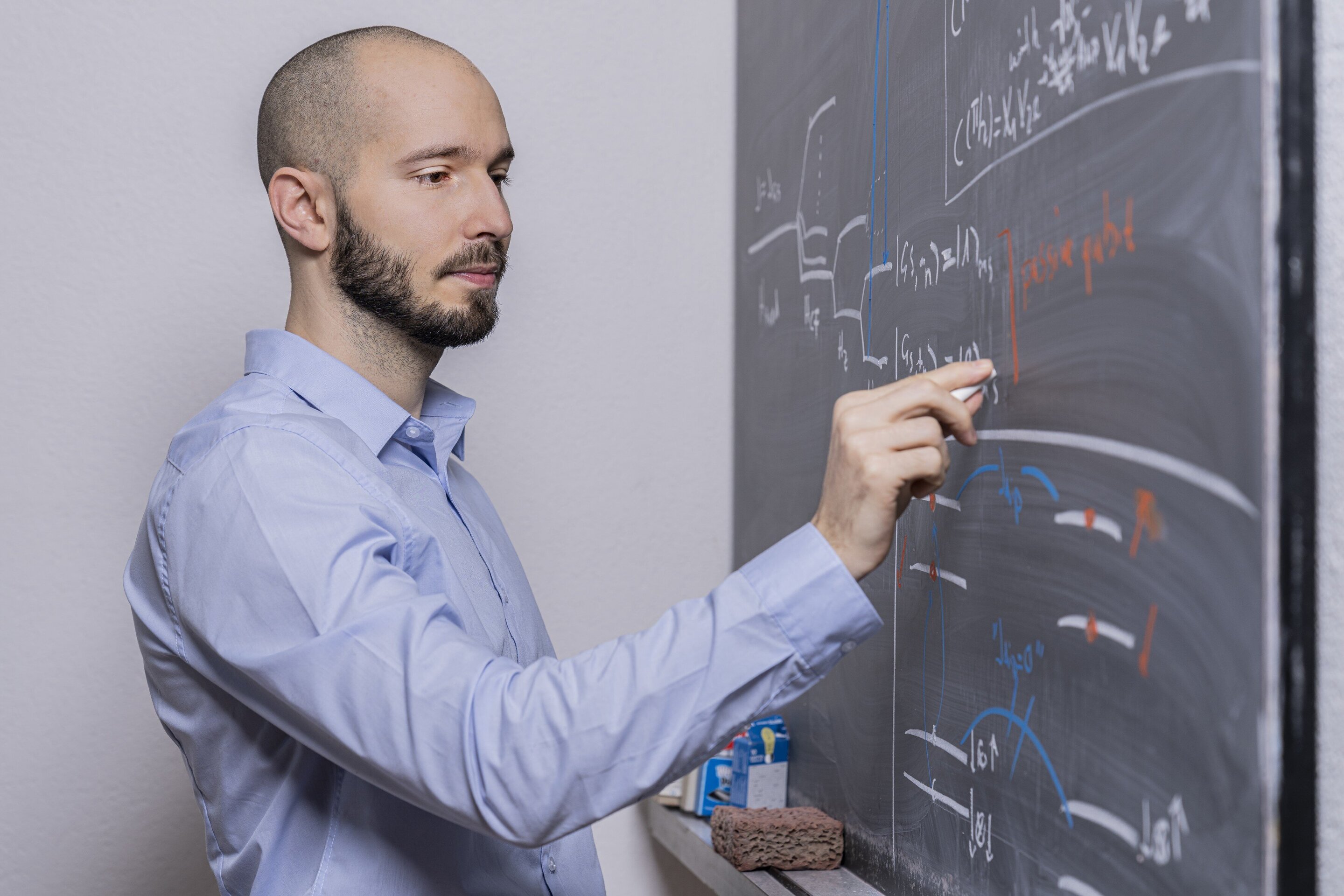
Manuel Grimm is a theoretical physicist at the Paul Scherrer Institute and is working on the foundations for building future quantum computers. Credit: Paul Scherrer Institute / Markus Fischer
Researchers at the Paul Scherrer Institute (PSI) have presented a detailed plan on how to create faster and better-defined quantum bits – kwbits. The central elements are magnetic atoms from the class of so-called rare earth metals, which will be selectively implanted in the crystal lattice of a material. Each of these atoms represents one kwbit. The researchers showed how these qubits can be activated, entangled, used as memory bits and read out. They have now published their design concept and supporting calculations in the journal PRX Quantum.
On the way to quantum computers is an initial requirement to create so-called quantum bits or ‘qubits’: memory bits that, unlike classic bits, can assume not only the binary values of zero and one, but also any random combination of these states. “This enables a whole new kind of computing and data processing, which means a huge acceleration of computing power for specific applications,” explains PSI researcher Manuel Grimm, first author of a new article on the subject of qubits.
The authors describe how logical bits and basic computer operations can be realized on it in a magnetic solid: kwbits would be on individual atoms from the class of rare earth elements, built into the crystal lattice of a host material. Based on quantum physics, the authors calculate that the nuclear spin of the rare earth atoms would be suitable for use as an information carrier, that is, a kwbit. They suggest that directed laser pulses can briefly transmit the information to the atom’s electrons and thus activate the kwbits, making their information visible to surrounding atoms. Two such activated qubits communicate with each other and can therefore be “entangled”. Entanglement is a special feature of quantum systems of multiple particles or qubits that is essential for quantum computers: The result of the measurement of one qubit depends directly on the measurement results of other qubits, and vice versa.
Faster means less error prone
The researchers demonstrate how these qubits can be used to produce logic gates, especially the ‘controlled NOT gate’ (CNOT gate). Logical gates are the basic building blocks that classical computers also use to perform calculations. If enough such CNOT gates as well as single-qubit gates are put together, every conceivable calculation operation becomes possible. They therefore form the basis for quantum computers.
This paper is not the first to propose quantum-based logic gates. “However, our method of activating and entangling the qubits has a decisive advantage over previous comparable proposals: it is at least ten times faster,” says Grimm. The advantage, however, is not only the speed with which a quantum computer can calculate based on this concept; it pays particular attention to the susceptibility of the system to errors. “Qubits are not very stable. If the entanglement processes are too slow, there is a greater likelihood that some of the qubits will lose their information in the meantime,” Grimm explains. Ultimately, what the PSI researchers discovered is a way to make this kind of quantum computer not only ten times as fast as comparable systems, but also less flawed by the same factor.
Error-protected quantum pieces entangled for the first time
Manuel Grimm et al., Universal Quantum Computing Using Rare Earth Ion Electronuclear Wave Functions, PRX Quantum (2021). DOI: 10.1103 / PRXQuantum.2.010312
Provided by the Paul Scherrer Institute
Quotation: New Blueprint for More Stable Quantum Computers (2021, January 22) Retrieved January 22, 2021 from https://phys.org/news/2021-01-blueprint-stable-quantum.html
This document is subject to copyright. Except for any fair trade for the purpose of private study or research, no portion may be reproduced without the written permission. The content is provided for informational purposes only.
